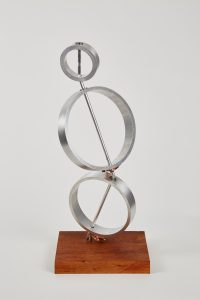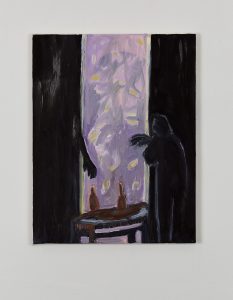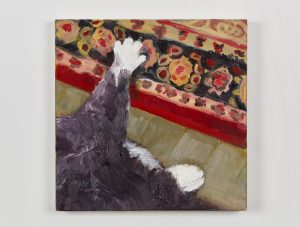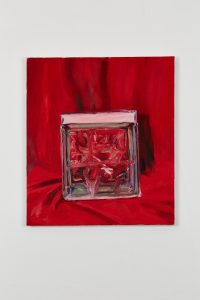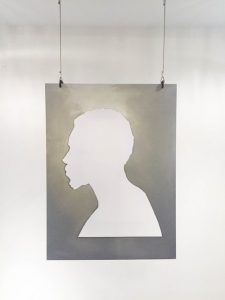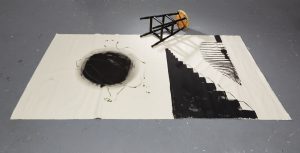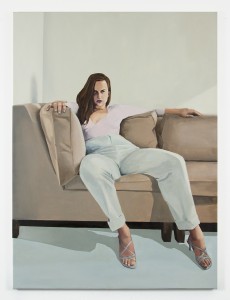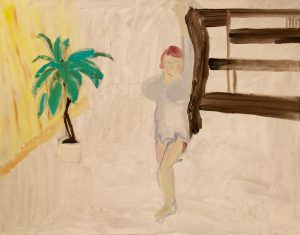The stereotypes of gender, sexuality, and the man/woman roles of a relationship that carry over into a same-sex relationship is an uneasy feeling that I cope with. I connect strongly with the displacement of oneself and paint self-portraits as a sort of tool towards figuring out one’s place in society. I apply paint in a rough and dabbing manner creating a patchwork of color. My interest is focused on flesh tones and how the body responds to touch. Faces are sometimes cropped out and the figures are angled in a way to direct the viewer to intimate moments such as the touch between two people. I create a notion of visibility through eye contact from the subject to the viewer. The gaze is something I address in most of my paintings. I want to represent the reality of the subject and repel the voyeuristic gaze. Alice Neel, an artist I’m inspired by, uses the gaze to present a truthfulness and reality of the unidealized body. My work balances personal and political themes while also responding to traditional portrait and figure painting in the context of art history. I paint people that identify as queer or anything other than straight. I paint queer people because of the underrepresentation of the LGBTQ community and culture. Similar to American photographer Catherine Opie, “their assertive portraits bring queers to a forefront that is normally silenced by societal norms.” I see it as my responsibility as a lesbian to represent queer people through painting.



